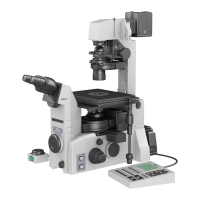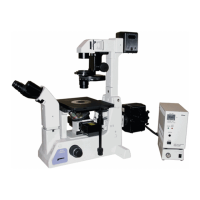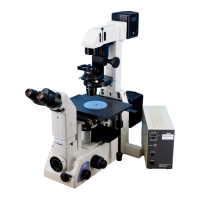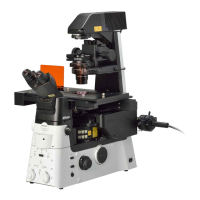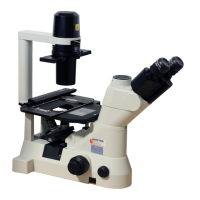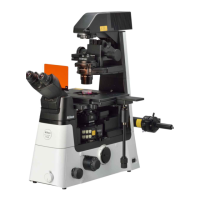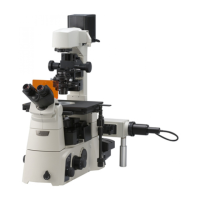III. Operation of each part
42
4. Using filters
Set the appropriate filters on four filter sliders of the dia-
illuminator. The following filters are available.
Filter Description
ND2
For brightness adjustment in normal microscopy and photomicrography.
Reduces light quantity to 1/2. (Approx. 50% transmissivity.)
ND16
For brightness adjustment in normal microscopy and photomicrography.
Reduces light quantity to 1/16. (Approx. 6% transmissivity.)
NCB11
For correcting the color temperature in normal microscopy and color photomicrography using day-light type
color film. (Should be removed on monochrome photomicrography.)
Color reproduction is optimized when this filter is set in the optical path and the brightness adjustment dial is
turned to the indication same as the ratings of the lamp.
GIF
Green interference filter. For microscopy using monochromatic light and for improving the contrast in
monochrome photomicrography.
HA
Heat absorption filter. For reducing the influence of heat rays in the illumination against specimen. Though
the dia-illuminator has a built-in heat absorption filter, set this filter in the optical path if your specimen is very
sensitive to heat.
5. Using field diaphragm
The field diaphragm restricts the illumination on a specimen to
an observed area. Raising the field diaphragm lever to its
uppermost position will maximize the diameter of the diaphragm.
(*1)
For general use, the diaphragm should be set slightly larger than
the view field. Too wide an illuminated area gives off stray light,
which causes flares, resulting in reduced image contrast.
Therefore, for photomicrography in particular, correct
adjustment is very important. The best results can be obtained
by stopping down the diaphragm so that it is slightly wider than
the area to be imaged on the film (such as the frame on the
photo-mask). (Note that stopping down the diaphragm too far
causes vignetting.)
*1: The size of the field aperture diaphragm on “T-DS dia-
illuminator 30W” is fixed and cannot be changed.
Any filter
Field
diaphragm
lever

